21/08/2019 | Category: Travel Insurance

The 7 wonders of the world existed to document the world’s most awe-inspiring natural wonders and manmade constructions. The original 7 wonders of the ancient world were chosen by Herodotus and Callimachus of Cyrene, who were historians and scholars respectively at the Museum of Alexandria.
Although their writings have not survived the test of time, there are references towards the original 7 wonders of the world.
What are the 7 wonders of the world?
The original 7 wonders of the world from the ancient world are:
- Colossus of Rhodes
- Hanging Gardens of Babylon
- Mausoleum at Halicarnassus
- State of Zeus at Olympia
- Temple of Artemis
- Great Pyramid of Giza
- Lighthouse of Alexandria

Can you visit the 7 wonders of the world?
Wondering how to find the seven wonders of the world? Unfortunately, only one of the original 7 wonders of the ancient world exist today. The Great Pyramid of Giza is the largest of a trio of breath-taking pyramids that border the present-day region of El-Giza. It should therefore come as no surprise that the Great Pyramid of Giza is on the bucket list of millions of people around the world.
In the midst of Egypt’s barren desert stand these majestic pyramids and feats of manmade engineering. Travelling to Giza has been somewhat tricky in recent years. Nevertheless, the Egyptian government has sought to make it safe by improving the security control surrounding the pyramids, allowing visitors to explore the site quietly at their own pace.
Introducing the new 7 wonders of the world
Given that just one of the original 7 wonders of the world exist today, it’s unsurprising that a “new” 7 wonders of the world have been created. In 2007, a Swiss company named the New 7 Wonders Foundation, conducted a survey in which tens of millions of people voted on the next generation of natural wonders and manmade marvels. All seven selected are UNESCO World Heritage sites and the majority of which are also constructed by ancient and medieval civilisations.
If you want to explore the new 7 wonders of the world, let’s take a look at what’s in-store for your once-in-a-lifetime trip:
-
The Taj Mahal, India
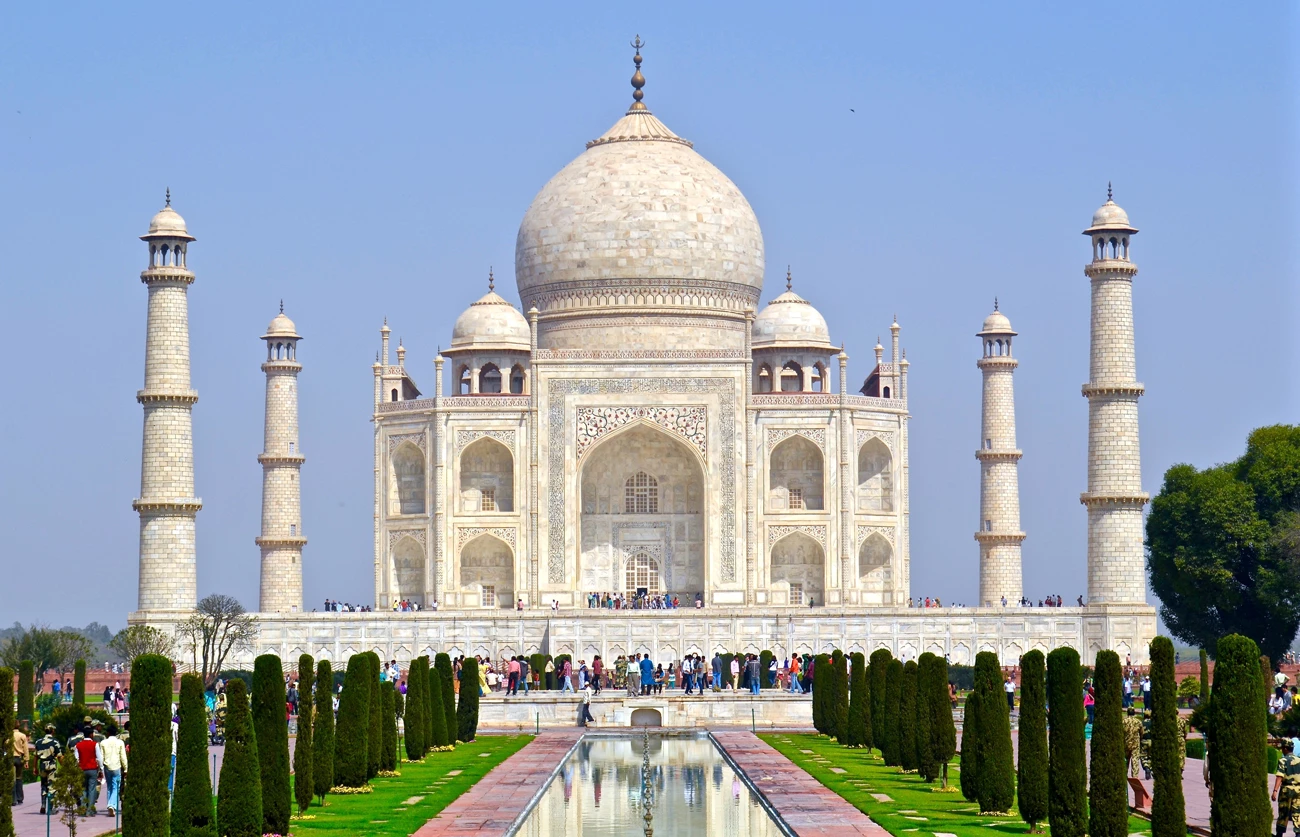
Widely regarded as one of the most picturesque and breathtaking buildings on the planet, the Taj Mahal is a monument like no other. Built by the Mughal Emperor, Shah Jahan, the fifth Emperor, it took an eye-watering 21 years to construct in Agra. The building was a monument to Emperor Jahan’s late wife, Mumtaz Mahal, who passed away in 1631. It stands 68 metres at its tallest point and the entire complex spans 170,000 square metres.
The central white marble mausoleum stands on a wide plinth, overlooking the rest of the complex. All four sides are virtually identical to the naked eye, which in itself is an incredible feat of engineering. Its garden is lined with long pools, fountains, pathways and relaxing ornamental trees, creating the perfect romantic setting for the Taj Mahal’s entrance.
More recently, air pollution from nearby industrialised towns and cities has threatened to decay the monument. However, the Indian government is working hard to mitigate the impact by closing some of the less-efficient foundries and building a parkland boundary instead.
-
The Great Wall of China
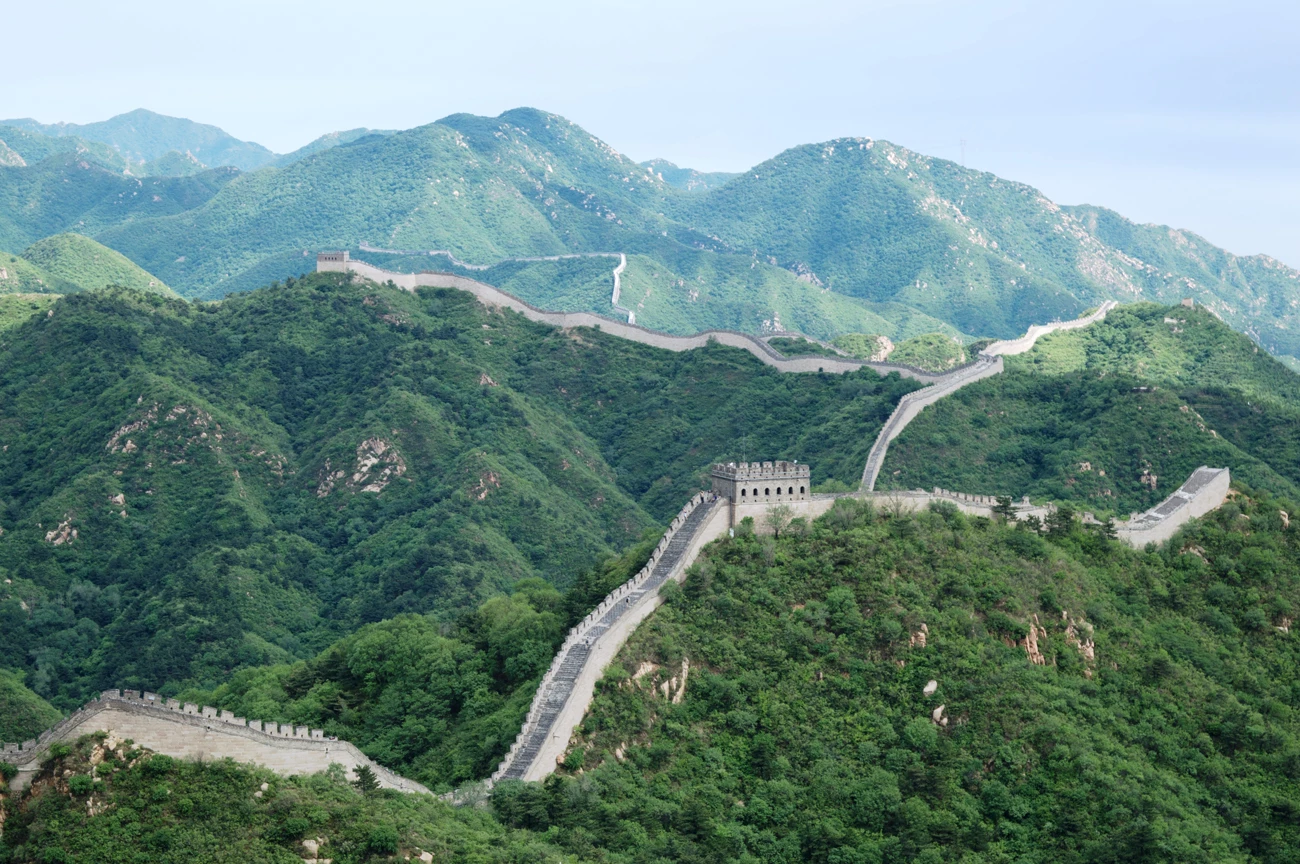
Not even seeing is believing when it comes to the Great Wall of China. Built approximately five centuries ago, it is still the longest wall in the world and the most magnificent example of ancient defence. Although previous estimates said the wall was between 1,500 and 5,000 miles long, an archaeological survey commissioned by China’s State Administration of Cultural Heritage found that it could be as long as 13,000 miles.
There’s actually multiple walls rather than a single Great Wall. That’s because some of the sections have given way through the decades due to roads and reservoirs. However, contrary to popular belief, the Great Wall does not contain corpses of labourers that helped build the wall. No human remains have ever been discovered in the Great Wall and there is no archaeological or written evidence to suggest we’re ever likely to find any.
-
The Colosseum, Italy
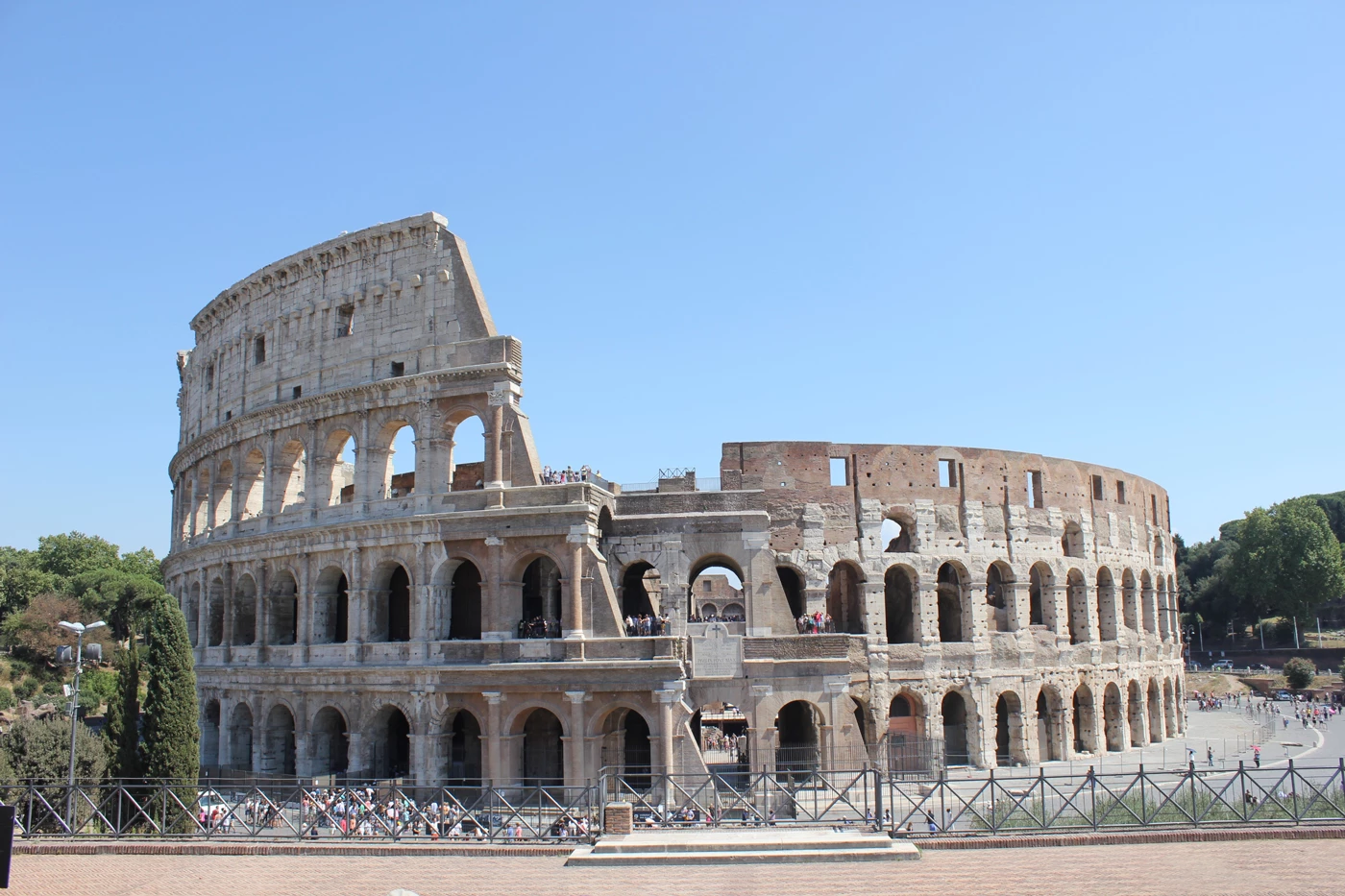
There are few more historic and awe-inspiring monuments that encapsulate ancient Italian history than Rome’s magnificent Colosseum. This oval-shaped ancient Roman amphitheatre is said to date back as far as 72AD, built under the rule of Emperor Vespasian. The capacity of the Colosseum is said to have previously hosted as many as 80,000 people who visited the arena to watch all kinds of public events and gladiatorial spectacles.
It’s one of the main reasons people visit Rome. Some five million tourists venture to see the remnants of the Colosseum, which stands an imposing 48 metres high, making it the world’s largest ever amphitheatre. If you want to understand the size and scale of the Colosseum, you’ll be amazed to hear there are 80 different entrances to the amphitheatre. With so many ways to get in and explore, you don’t actually feel very cramped in there, even though there may be thousands of tourists with you at any one time.
Built over ten years as a gift to the people of Ancient Rome, the Colosseum is an everlasting icon of the Flavian dynasty and will certainly capture your imagination.
-
Petra, Jordan
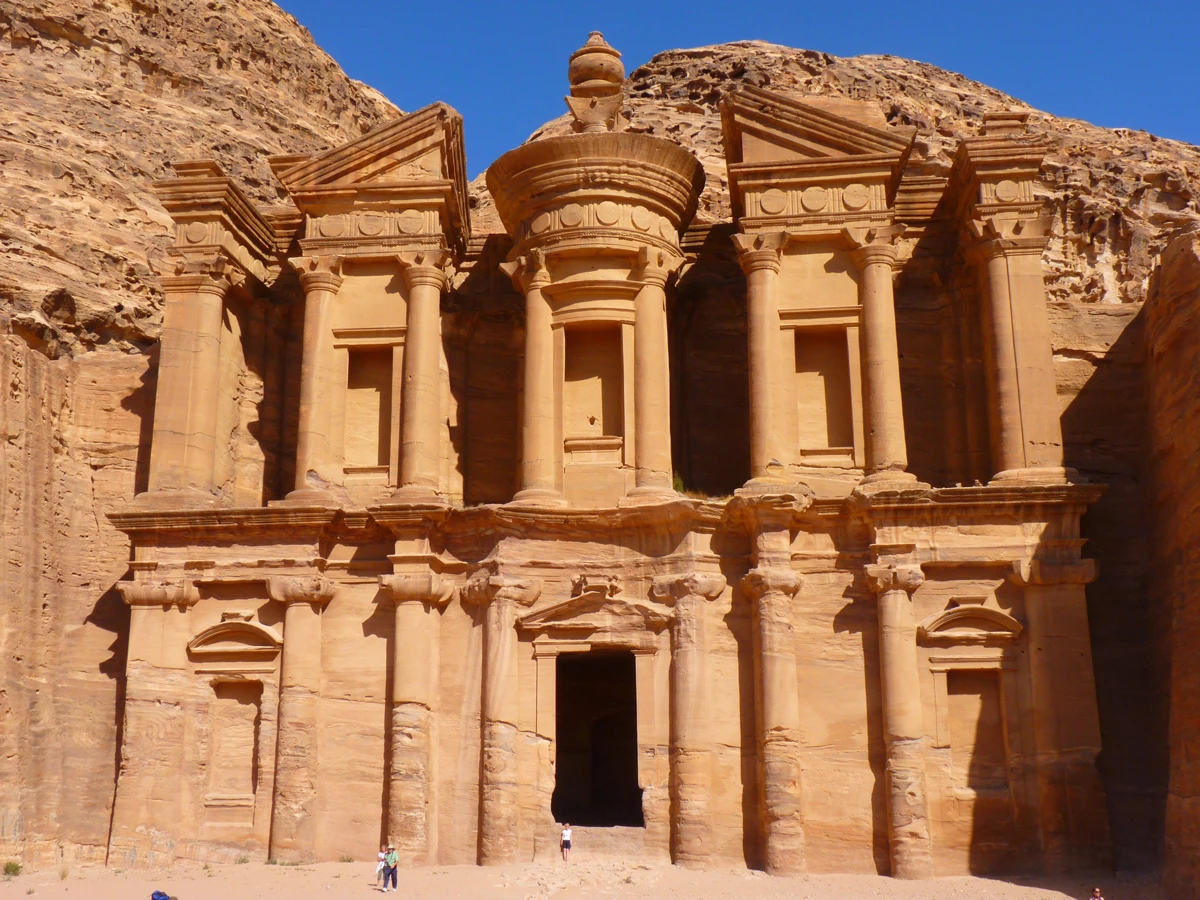
The former capital of the Nabatean civilisation, the ancient city of Petra stands proudly amid Jordan’s remote Shara mountains. Petra used to be the hub of global trade some 2,000 years ago. This tribe of Arabian nomads came close to knocking the Ancient Roman empire off its perch, too. Today, its remnants and facades leave a timely reminder of the creativity and wonder of the Nabateans.
Many of Petra’s most incredible buildings remain today, at least in some way, shape or form. It has an almost cinematic quality to it when you explore on foot, with backdrops that have been used in blockbuster films like James Bond and Indiana Jones.
Spring and autumn are said to be the best times of the year to visit Petra, when the temperatures are a little fresher and more moderate than in the height of summer when temperatures can soar above 40C. Petra itself sits just 250 kilometres south of Jordan’s capital city of Amman, so it’s within driving distance if you fly into Amman.
-
Christ the Redeemer statue, Brazil

There are few more iconic images that remind you of Brazil than the Christ the Redeemer statue. This imposing monument stands proudly over the city of Rio de Janeiro, achieving symbolic status among Brazilians and tourists alike. It was built between 1922 and 1931, with a clutch of French, Brazilian and Romanian sculptors and engineers coming together to create a unique Christian monument atop Mount Corcovado.
Since then, it has twice been restored and renovated in 2003 and 2010, not only to improve the statue’s façade but to improve access to the platform surrounding the statue for tourists. There are three ways you can get to the bottom of Christ the Redeemer. You can take the train, known as bondinho, which works its way up from the Corocovado’s base at the Trem do Corcovado station. Shuttle buses also run there and back, with tickets available to buy online. If you’re feeling really adventurous you could hike your way up Mount Corcovado, which takes a good 90 minutes to complete.
It’s a good idea to avoid Christ the Redeemer during the Rio Carnival and Christmas time, when the statue is in even greater demand. The last thing you want is to have to jostle shoulder-to-shoulder for those heavenly panoramic views of Rio de Janeiro.
-
Machu Picchu, Peru
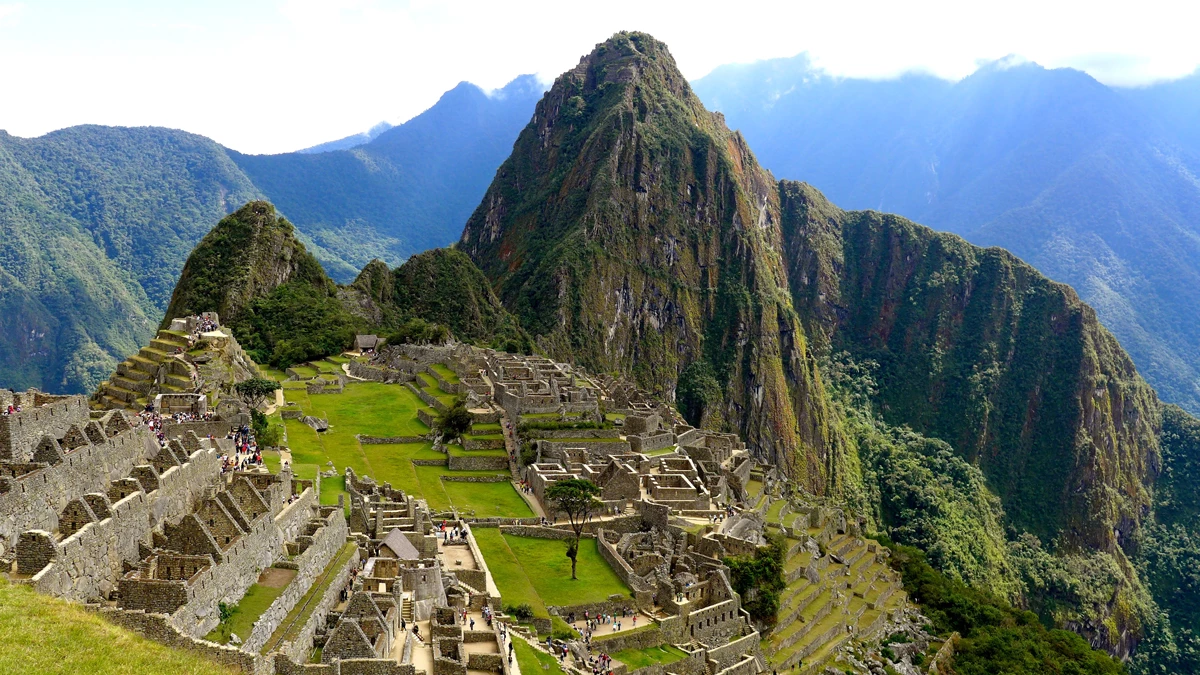
Machu Picchu is regarded as the “Lost City of the Incas”. The ruins of an ancient Inca city were discovered high above sea level in the Peruvian Andes back in 1911. Standing some 8,000 feet above sea level, it’s fast become one of the most spectacular symbols of the Incan Empire. No trip to Peru would be complete without paying Machu Picchu a visit.
Historians believe that Machu Picchu was far from a busy, crowded city. In fact, they believe that no more than 750 people resided here at once. That’s because Machu Picchu was said to be a hideaway resort for only the elite Incas. During the rainy season, even fewer than that would be present here. There is no doubt that this site would have been exceptionally well-hidden from fellow Incas and any enemies, too.
The architecture of Machu Picchu is typically Incan. The polished dry-stone walls still exist today and you can see the remnants of some of its most prized buildings, such as the Temple of the Sun and the Intihuatana.
-
Chichen Itza, Mexico
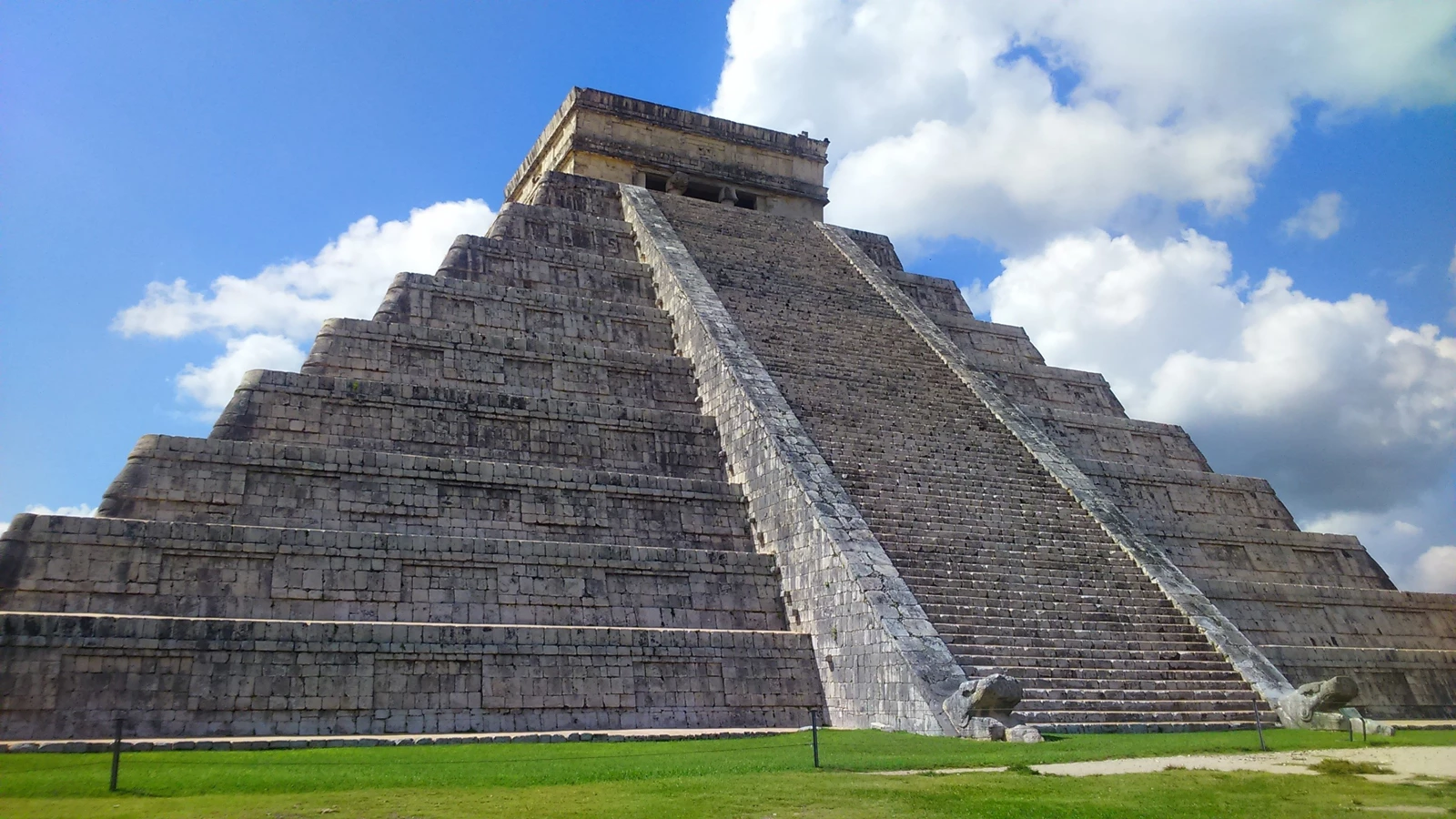
Another hugely symbolic heritage site in Central and South America is Mexico’s Chichen Itza. The remains of the former ancient Mayan capital are one of the most popular tourist destinations throughout Mexico. It received UNESCO World Heritage Site status back in 1988, marking the importance of this former pilgrimage for ancient Mayans that stood proudly for centuries.
Chichen Itza was still an important place of pilgrimage for Mayans until they were conquered by the Spanish Conquistadors in the 1500s. Through time, Chichen Itza slowly decayed and became overwhelmed by the nearby jungle. It wasn’t until 1920 when a large-scale archaeological team worked together to restore the ancient ruins to their former glory and make the site accessible for tourists and locals once more.
The most famous landmark of Chichen Itza is undoubtedly the Pyramid of Kukulcan, also known as El Castillo. This pyramid-shaped temple was built in homage to the Feathered Serpent God. It used to be possible to climb El Castillo, but since 2006 the decision was taken to preserve its structure and restrict tourists to access on the ground level only.
How much does it cost to see all 7 wonders of the world?
According to an independent study cited by Skyscanner, it has been proven that you can visit all of the new 7 wonders of the world in one trip for approximately £5,194. However, do bear in mind that Voucherbox’s study was undertaken in 2016 and prices might have changed somewhat in the last few years. However, Shane Forster, UK country manager of Voucherbox says that it’s at least encouraging that this kind of trip “would have been well beyond the means” of the average traveller a few decades ago. Now, Forster says it’s possible to catch a glimpse of all 7 wonders of the world “for less than the cost of a new car”.
Of course, if you’re travelling around the world to explore the sights and sounds of today’s 7 wonders of the world, you’ll need adequate travel insurance. Some people with medical conditions are deterred from packing their bags and seeing the world. That’s because they’re unaware there is health travel insurance out there that could cover them. Some insurers do have the necessary risk appetite to insure travellers with pre-existing medical conditions.
At Insurance Choice, we encourage those planning around-the-world trips to visit today’s 7 wonders of the world to arrange health travel insurance as soon as the holiday is booked. This ensures your money is protected against cancellations linked to your medical condition(s).
It’s highly likely that you will go on one or more cruises as part of your around-the-world experience to see the new 7 wonders of the world. Our health travel insurance experts can provide bespoke policies that cover cruises as standard. Some of our health travel insurance policies can also cover specialist aspects of a cruise holiday, such as missed port cover and cabin confinement cover.
It’s important when you pick up the phone and speak with a friendly, experienced member of our team to inform them of all the pre-existing medical conditions that you have. This is purely to safeguard you. The last thing you want is to avoid mentioning a specific ailment that requires treatment during your trip. In this scenario, your health travel insurance wouldn’t cover you, leaving you liable for the cost of your treatment abroad.
Our health travel insurance policies at a glance:
- Medical cover up to £25 million
- Consideration for terminal illnesses
- Unlimited trips covered
- No upper age limits
- 24-hour medical assistance phoneline
Get a quote for travel insurance with pre-existing medical conditions today with Insurance Choice!
